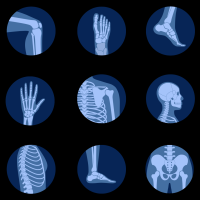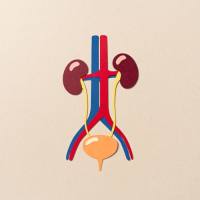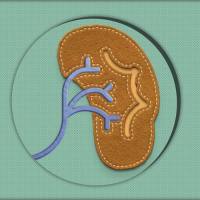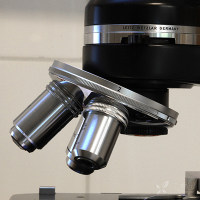【medical-news】应用RECIST 1.1 评估淋巴结肿瘤
L.H. Schwartza, , , J. Bogaertsb, R. Fordc, L. Shankard, P. Therassee, S. Gwytherf and E.A. Eisenhauerg
aDepartment of Radiology, Memorial Sloan Kettering Cancer Center, 1275 York Avenue (C-276D), NY, USA
bEuropean Organization for Research and Treatment of Cancer, Data Centre, Brussels, Belgium
cRadPharm, Princeton, NJ, USA
dDivision of Cancer Treatment and Diagnosis, National Cancer Institute, Bethesda, MD, USA
eGlaxoSmithKline Biologicals, Rixensart, Belgium
fEast Surrey Hospital, Redhill, Surrey, UK
gNational Cancer Institute of Canada – Clinical Trials Group, Kingston, ON, Canada
Received 17 October 2008; accepted 29 October 2008. Available online 16 December 2008.
Abstract
Lymph nodes are common sites of metastatic disease in many solid tumours. Unlike most metastases, lymph nodes are normal anatomic structures and as such, normal lymph nodes will have a measurable size. Additionally, the imaging literature recommends that lymph nodes be measured in the short axis, since the short axis measurement is a more reproducible measurement and predictive of malignancy. Therefore, the RECIST committee recommends that lymph nodes be measured in their short axis and proposes measurement values and rules for categorising lymph nodes as normal or pathologic; either target or non-target lesions. Data for the RECIST warehouse are presented to demonstrate the potential change in response assessment following these rules. These standardised lymph node guidelines are designed to be easy to implement, focus target lesion measurements on lesions that are likely to be metastatic and prevent false progressions due to minimal change in size.
Keywords: Response criteria; Solid tumours; Guidelines; Lymph node
Article Outline
1. Introduction
2. Materials and methods
3. Results
4. Discussion
Conflict of interest statement
References
1. Introduction
Malignant lymph nodes are common target and non-target lesions, which are assessed with the RECIST criteria. However, many diseases, both neoplastic and inflammatory, may result in enlarged lymph nodes, and lymph nodes unlike other metastatic deposits have a normal size when non-malignant. Currently, the main imaging finding suggestive of metastatic lymph nodes involvement is the size of a lymph node; larger lymph nodes are more likely to be malignant than smaller nodes.1 Since the 1980s CT has emerged as the primary lymph node imaging modality.2 Numerous studies have evaluated the sensitivity, specificity and accuracy of computed tomography and the other imaging modalities in the diagnosis of metastatic lymphadenopathy.
The comparison between these studies is difficult because of different size criteria utilised for malignant nodes, different measurement techniques (long axis, short axis or ratio) and perhaps most importantly, the differing behaviours of various primary neoplasms with respect to the patterns and prevalence of nodal involvement. Most studies evaluating lymph nodes have been conducted in the preoperative setting, where nodal sampling at time of surgery may be performed to provide a gold standard for diagnosis. State-of-the-art CT scanning offers an excellent spatial resolution for measuring lymph nodes. At CT, the most reliable finding suggestive of malignant lymph nodes is size enlargement. This is also the most common source of false positive and negative characterisation of lymph node measurements. The size criteria to determine malignancy within a lymph node have been reported to vary significantly based upon the lymph node location and primary tumour type. For instance, normal-sized retrocrural lymph nodes should not exceed 6mm in short axis, whilst in the retroperitoneum and mesentery normal-sized nodes are considered to be less than 10 mm.1
The type of measurement used to size a lymph node will greatly impact the prediction of malignancy. The commonly used metrics to measure a lymph node include the greatest axial diameter (also known as greatest transverse diameter or longest diameter), the minimal (or short) axial diameter and a ratio of these two values.[3] and [4] According to the imaging literature, lymph node measurement in the short axis is the most reproducible and optimal predictor of malignancy.[5] and [6] It was the goal of the RECIST working group to develop an approach for assessment of malignant nodal disease that was based on the medical literature whilst relatively simple to incorporate into the sum of lesions, and then subject that approach to investigation by analysis of the data warehouse to determine its impact on the overall response and progression rates as compared to the original RECIST (which was silent on how to handle nodal disease). It was the expectation of the RECIST working group that the approach developed would be unlikely to dramatically change response rate (or progression).
The proposed lymph node criteria which were tested using the data warehouse were as follows:
Lymph nodes: To be considered pathologically enlarged and measurable, a lymph node must be at least 15 mm in short axis when assessed by CT scan (CT scan slice thickness recommended to be not greater than 5 mm). Lymph nodes that are at least 10 mm but less than 15 mm in short axis may be pathologic and can be considered non-measurable/non-target lesions (that are not measured). At baseline and in follow-up, only the short axis will be measured and followed.
During follow-up, lymph nodes identified as target lesions should always have the actual short axis measurement recorded, even if below 10 mm. A sum of the lesion diameters (longest for non-nodal lesions and short axis of nodal lesions) for all target lesions will be calculated and reported as the baseline sum diameters. If lymph nodes are to be included in the sum, then as noted above, only the short axis is added into the sum. This means that when lymph nodes are included as target lesions, the ‘sum’ of lesions may not be zero even if complete response criteria are met, since a normal lymph node is defined as having a short axis of <10 mm (Fig. 1). Case report forms or other data collection methods may therefore be designed to have target nodal lesions recorded in a separate section where, in an algorithm to calculate CR, each target lymph node must be less than 10 mm in short axis. For PR, SD and PD, the actual (short axis) measurement of the nodes is to be included in the sum of the target lesions.
Full-size image (59K)
Fig. 1. An abnormally enlarged right external iliac lymph node (arrow) at baseline (A) decreases in size and is considered normal, according to the short axis measurement at follow-up (B).
View Within Article
2. Materials and methods
Data warehouse composition: As in the data warehouse paper published in this journal,7 data for analysis of lymph nodes were collected from 16 clinical trials in metastatic cancer, with patients enrolled between 1993 and 2005. Of a total of 9147 patients for whom data were collected, 6512 could actually be included in the primary dataset. Reasons for exclusions were lack of recorded measurable lesions (1491, 16%), lack of valid measurement data post baseline (613, 7%), lack of any valid outcome when applying RECIST version 1.0 (mostly because not all targets were consistently followed, 326 cases, 4%) and a recorded best response of ‘unevaluable’ 205 (2%). In the primary dataset, over 18,000 potential target lesions were available. Three thousand nine hundred and seventy-four potential targets were lymph nodes, and of these 2747 were bidimensionally measured. The analysis below focusses on the 1235 patients for whom these bidimensionally measured lymph nodes were recorded, using the second diameter for short axis. Table 1 lists the status of lymph nodes according to the RECIST 1.1 rules for target lesions and measurable disease,8 and Table 2 breaks down the frequency of both lymph node and non-lymph node target lesions in patients.
--------------------------------------------------------------------------------
Table 1.
Status of baseline bidimensional LN measurements in the primary dataset patients (classified according to measurement of short axis).
Classification Frequency (N = 2747) Percent
Not pathologic (short axis <10 mm) 67 2.4
Non-target (short axis 10 mm, <15 mm) 193 7.0
Target LN (short axis 15 mm) 2487 90.5
Full-size table
View Within Article
--------------------------------------------------------------------------------
Table 2.
Primary warehouse dataset tabulated by number of lymph node target lesions and non-lymph node target lesions.
No. of LN target lesions Number of non-LN target lesions
--------------------------------------------------------------------------------
Total
Frequency 0 1 2 3 4 5 6 7 8 9 10
0 0 1557 1239 737 353 266 87 43 27 16 22 4347
1 243 427 255 135 60 45 24 15 12 10 0 1226
2 118 186 89 44 24 19 15 9 9 0 0 513
3 49 55 32 15 14 16 7 9 0 0 0 197
4 30 37 18 12 10 6 7 0 0 0 0 120
5 15 10 13 4 3 11 0 0 0 0 0 56
6 10 4 2 3 5 0 0 0 0 0 0 24
7 7 2 1 4 0 0 0 0 0 0 0 14
8 3 2 2 0 0 0 0 0 0 0 0 7
9 2 5 0 0 0 0 0 0 0 0 0 7
10 1 0 0 0 0 0 0 0 0 0 0 1
Total 478 2285 1651 954 469 363 140 76 48 26 22 6512
Full-size table
View Within Article
Several analyses were performed to show the effects of changing the lymph node criteria. A lymph node response was calculated by restricting the data points used to only (measured) lymph nodes, disregarding information about other target lesions, non-target lesions and new lesions, both using the criteria as per RECIST 1.0 and RECIST 1.1. Such lymph node responses were also tabulated by overall RECIST-calculated response (refer to warehouse paper).
3. Results
According to the new rules of RECIST in version 1.1, 90.5% of lymph nodes would be considered target lesions at baseline/screening based upon the optimal size criteria. There are many possible ways to analyse the change in response assessment criteria based upon changing the lymph node measurement criteria. In general, as expected there was a shift in the overall response, and especially lymph node response to a CR. Table 3 illustrates an analysis of lymph nodes only from using RECIST 1.0 and RECIST 1.1 on the 1235 patients in the data warehouse. As expected, given the definition of CR with the new rule considers nodes <10 mm to be ‘normal’, measurements for both axes available. Here are a higher percentage of patients classified as CR using RECIST 1.1 that were considered PR with RECIST 1.0. Furthermore, the new rule shifts a few of the patients from SD to PR.
--------------------------------------------------------------------------------
Table 3.
Response assessment using only lymph nodes information.
RECIST 1.0
--------------------------------------------------------------------------------
Total (N = 1235)
CR (N = 233) PR (N = 365) SD (N = 505) PD (N = 77) No result (N = 55)
N (%) N (%) N (%) N (%) N (%) N (%)
RECIST 1.1
CR 230 (98.7) 82 (22.5) 3 (0.6) 0 (0.0) 0 (0.0) 315 (25.5)
PR 0 (0.0) 245 (67.1) 74 (14.7) 1 (1.3) 1 (1.8) 321 (26.0)
SD 2 (0.9) 36 (9.9) 408 (80.8) 33 (42.9) 0 (0.0) 479 (38.8)
PD 1 (0.4) 2 (0.5) 20 (4.0) 36 (46.8) 4 (7.3) 63 (5.1)
No result 0 (0.0) 0 (0.0) 0 (0.0) 7 (9.1) 50 (90.9) 57 (4.6)
Full-size table
Some patients in the primary warehouse dataset have no result using only LN information, for example because they had an early new lesion (and that information is not used in this analysis).
View Within Article
Table 4 shows the performance of RECIST 1.0 using all lesions and lymph nodes only for both the older version of RECIST 1.0 and the RECIST 1.1. Again, there is principally a transition from PR to CR and from SD to PR to a lesser extent.
--------------------------------------------------------------------------------
Table 4.
Responses for LN.
RECIST 1.0 – all lesions
--------------------------------------------------------------------------------
Total (N = 1235)
CR (N = 69) PR (N = 441) SD (N = 478) PD (N = 247)
N (%) N (%) N (%) N (%) N (%)
RECIST 1.0 – lymph nodes only
CR 69 (100.0) 141 (32.0) 18 (3.8) 5 (2.0) 233 (18.9)
PR 0 (0.0) 269 (61.0) 75 (15.7) 21 (8.5) 365 (29.6)
SD 0 (0.0) 28 (6.3) 373 (78.0) 104 (42.1) 505 (40.9)
PD 0 (0.0) 3 (0.7) 12 (2.5) 62 (25.1) 77 (6.2)
No result 0 (0.0) 0 (0.0) 0 (0.0) 55 (22.3) 55 (4.5)
RECIST 1.1 – lymph nodes only
CR 69 (100.0) 206 (46.7) 32 (6.7) 8 (3.2) 315 (25.5)
PR 0 (0.0) 192 (43.5) 106 (22.2) 23 (9.3) 321 (26.0)
SD 0 (0.0) 41 (9.3) 324 (67.8) 114 (46.2) 479 (38.8)
PD 0 (0.0) 2 (0.5) 16 (3.3) 45 (18.2) 63 (5.1)
No result 0 (0.0) 0 (0.0) 0 (0.0) 57 (23.1) 57 (4.6)
Full-size table
View Within Article
4. Discussion
Lymph node metastases determined by histologic examination are an important prognostic indicator in many solid tumours. For instance, the presence or absence of lymph node metastases is closely linked to the survival of patients with gastric cancer, and it is generally recommended that pathologic analysis of enlarged lymph nodes be performed to assess the outcome of a patient. In gastric cancer, a malignant lymph node is one that measures greater than 1 cm and tends to be ‘round’.9 In lung cancer, the presence and location of malignant lymph nodes have a significant influence on management of a patient as well as a patient’s prognosis. For instance, metastases to ipsilateral lymph nodes decrease survival rates but these are not a contraindication to surgical resection.[10] and [11] Whilst size criteria are mainly used for determining the likelihood of malignancy within a lymph node, other features may be helpful. Fatty hilus of a lymph node is generally indicative of a benign node. Calcifications within nodes can be seen in inflammatory conditions or in treated tumours including lymphoma, sarcoma and some mucinous tumours. Other processes including retroperitoneal fibrosis or primary retroperitoneal tumours may mimic lymphadenopathy and lead to a differential diagnosis.
Unlike most other sites of metastases, lymph nodes occur normally in the body and will have a ‘normal’ size. The CT finding most suggestive of metastatic lymph nodes involvement is nodal size. To characterise the size and number of nodal lymph nodes, Schnyder and Gamsu studied healthy patients from Switzerland and found that normal nodes detected in the pretracheal retrocaval space in 80% of patients and showed a mean longest diameter of 5.5 ± 2.8 mm.12 In this same study, lymph node size appeared to increase with age, but almost all negative (normal) lymph nodes were less than 11 mm.
The imaging literature is comprehensive in the analysis of lymph nodes in the preoperative setting for many solid tumours in terms of sensitivity, specificity and accuracy based upon size measurements. However, there has been relatively little uniformity in the manner in which the lymph nodes were measured in many of these studies. It has been shown that short axis measurement of lymph nodes was the most reliable parameter of nodal size, because it is less dependent on the spatial orientation of the lymph node relative to the CT scan. In the chest, for instance, the largest lymph nodes were noted in the subcarinal and right tracheal bronchial regions measuring 6.2 ± 2.2 mm and 5.9 ± 2.1 mm. According to these results, in a land mark paper, Glazer et al. suggested using 1 cm as the upper limits of normal for lymph nodes in the short axis. Values above this should be considered enlarged and potentially malignant.
Since an accurate, reproducible measurement of lymph nodes is critical in assessing response to therapy, we have decided to adopt the short axis measurement of lymph nodes.8 Numerous studies have evaluated the accuracy and utility of CT scanning and diagnosing lymph node metastases. In general, sensitivities and specificities ranged from the low of 55% to a high of 94%.[11], [12], [13], [14], [15], [16], [17] and [18] The comparison between multiple studies is difficult because of the different size criteria utilised, for abnormal nodes the different type of measurements performed, and most importantly different patient populations.
We recognise that micro metastases may still be present in small nodes, and large nodes may only contain inflammation. However, this is a limitation of any type of biomarker imaging-based analysis, short of the histopathological study of the actual tissue. Further, it is recognised that not all lymph nodes have the same size throughout the body. For instance, axillary and inguinal lymph nodes may be larger than hilar or retroperitoneal lymph nodes and still be non-malignant. Even within the abdomen, normal lymph node size will vary. For instance, a normal size short axis lymph node measurement for the retrocaval space is 6 mm and 8 mm in the portacaval (Fig. 2) and gastrohepatic space, and 11 mm for the lower para-aortic region.13 Again, size stratification based upon body region would be difficult to serially follow and potentially provide discordant findings. Also, the short axis of a lymph node is likely more similar in size throughout body regions than the long axis.
--------------------------------------------------------------------------------
Full-size image (90K)
Fig. 2. An abnormally enlarged portacaval lymph node (arrow) at baseline (A) decreases in size and is considered normal, according to the short axis measurement at follow-up (B). Notice that the long axis of the lymph node (arrow) has not changed in size substantially (3.3 cm versus 3.0 cm) and if long axis lymph node size were measured then the node would not have been considered to respond. This is inconsistent with the other metastases in the liver in this patient that has responded.
View Within Article
Sizing of lymph nodes and overall accuracy also vary depending upon the primary tumour type.19 In a study by McLoud et al., CT had a sensitivity of 64% and a specificity of 62%, when using 1 cm as the upper limit of the short axis diameter for lung cancer assessment.19 In general in lung cancer, in an overall weighted analysis of 42 studies sensitivity was 83%, specificity 81% and accuracy was 81% for detection of malignant nodal involvement.20 In an analysis of 2891 lymph nodes in 256 specimens in lung cancer, the mean short axis diameter of the non-malignant lymph node was 7.05 ± 3.75 mm, whilst the mean short axis diameter of tumour bearing nodes was 10.7 ± 4.7. In gastric cancer, lymph node metastases were more common in those greater than 9 mm with a short to long axis ratio of greater than 0.7.21 In the pelvis, both the maximal diameter and the minimal axial diameter of both nodes as well as the ratio of these have been evaluated. In the pelvis, the generally accepted CT and MR imaging criteria of diagnosis of metastatic pelvic lymphadenopathy are size. Diameter limits ranging from 6 to 15 m have been used with 10 m often being most commonly used criterion for limits of upper or normal size nodes.22 A minimal axial diameter of greater than 10–15 mm has been found to be the most valid criterion for detection of, for instance, uterine cervical lymph nodes.16 The highest reported accuracy rate to date for diagnosis of metastatic pelvic nodes was 93%. This study utilised MRI and used a short axis diameter cut-off of 10 m. Again, it is accepted that neither MRI imaging nor helical CT can depict small metastatic deposits within normal-sized nodes.
Whilst the short axis size of 10 mm may be considered generous to some, a fundamental principle in response assessment is to be as certain as possible that a lesion selected for measurement actually is malignant. This cut-off value will hopefully limit the inclusion of normal nodes or possibly minimally enlarged inflammatory nodes as target lesions. In fact, the prostate working group’s criteria for a measurable metastatic lymph node are 20 mm in the long axis, perhaps an even stricter criterion.23 Since lymph nodes never ‘disappear’ it is difficult to achieve a complete response when the greatest axial diameter of a lymph node is included in the sum of target lesions; therefore, a part of the revised RECIST1.1 calls for lymph nodes originally enlarged in the short axis to be considered to have reached a CR status once they are all <10 mm short axis.8 Actual measurements (rather than ‘zeroing out’ nodes <10 mm) should be recorded for CR, PR, SD or PD in order to avoid the concern of falsely progressing a patient based upon small increases in lymph node size, which may be within the measurement error. For instance, if a lymph node would vary between 9 and 11 mm the impact on response assessment would be potentially 11 mm if a 9 mm lymph node was considered to have a 0 measurement. Since time to progression and progression free survival are such important end-points, this concern prompted the continued measurement of lymph nodes below the ‘normal’ cut-off value of 10 mm. Therefore, in the hypothetical example above, the increase for 9 mm to 11 mm would be the actual 2 mm increase and contributes less to a potential progression sum if a 9 mm lymph node had an actual 0 measurement. The appearance of new lymph node, or growth of a normal-sized node is considered PD (Fig. 3).
--------------------------------------------------------------------------------
Full-size image (56K)
Fig. 3. Progressive disease in retroperitoneal lymph nodes (arrows) at (B) compared to the baseline (A) scan. At baseline the lymph nodes are normal in size. At follow-up, these nodes measure greater than 10 mm in short axis representing progressive disease.
View Within Article
The importance of accurate measurement of lymph nodes was well illustrated in a Phase 2 study, which demonstrated fewer responders when the long axis of the lymph node was measured as compared with the short axis.24 In fact, the difference was significant for the purpose of pursuing the drug further as more responders were identified, when considering both the long and short axes of the lymph node. When considering only the short axis of the lymph node, there was significantly better correlation with other target lesions and tumour burden measurement.
The assessment of lymph nodes in non-Hodgkin’s lymphoma may be somewhat more complex, and this complexity is reflected in the development of lymph node criteria for lymphoma. According to the report of the International Workshop to Standardise Response Criteria for Non-Hodgkin’s Lymphoma at the time of diagnosis, a lymph node that is greater than 1 cm in its longest diameter should be considered compatible with involvement by NHL. Issues related to lymph node size at serial follow-up are more difficult to be assessed because as with other solid tumours the involved lymph node may decrease in size and no longer contain tumour but it will still have the appearance and size of a ‘normal’ lymph node. It is not infrequent in lymphoma for tumour involved lymph nodes to decrease in size but develop fibrosis, necrosis or inflammation resulting in persistent enlargement of the node, although it may be histologically uninvolved by tumour.25 Therefore, the criteria for lymph node change assessment in non-Hodgkin’s lymphoma is that those nodes greater than 1.5 cm in greatest transverse diameter, are considered to be abnormal should decrease to less than 1.0 cm to be considered normal in size. Other involved lymph nodes that were between 1.1 and 1.5 cm in their long axis and were greater than 1.0 cm in their short axis before treatment must have decreased to less than 1.0 cm in their short axis after treatment.[26] and [27]
There is promise for more accurate methods to assess lymph nodes. In lymphoma, positron emission tomography (PET) with the tracer fluorine-18 (F-18) fluorodeoxyglucose (FDG) is widely used in clinical practice, and has been incorporated into guidelines for assessing lymphomatous masses including enlarged lymph nodes.27 The combination PET/CT scanners also improve sensitivity and specificity for characterising lymph nodes in both lymphoma and other solid tumours. In magnetic resonance imaging, intravenously injected small superparamagnetic iron oxide particles will pass through the vascular endothelium into the interstitium and will be taken up by normal and inflammatory lymph nodes of any size. Therefore, normal or inflammatory lymph nodes will show a decreased signal intensity on most MRI sequences unlike tumour-containing nodes, which will not lose signal.[28], [29] and [30] Whilst both methodologies are used in some clinical practices, their routine use in clinical trials is not yet recommended.
In summary, the purpose of the modified lymph node criteria for RECIST 1.1 was to address the limitations of a simple long axis measurement of lymph nodes and the fact that normal (non-malignant) lymph nodes will still have a size measurement. The goal of the criteria was to create a standard that is biologically meaningful yet simple to use and deploy in both oncology and radiology practices. Our goal was not only to make lymph node measurements more accurate, but also to prevent both normal lymph nodes from being measured as target lesions and falsely progressing lymph nodes based upon small increases in size, which may be within the measurement error. Finally, by adopting the short axis measurement for lymph nodes, their use in response assessment is better aligned with clinical radiology practice.
Conflict of interest statement
None declared.
http://www.sciencedirect.com/science?_ob=ArticleURL&_udi=B6T68-4V5DWRH-4&_user=5341118&_rdoc=1&_fmt=&_orig=search&_sort=d&view=c&_acct=C000050159&_version=1&_urlVersion=0&_userid=5341118&md5=74342ff8865a632dad25883bded1ab1b















































